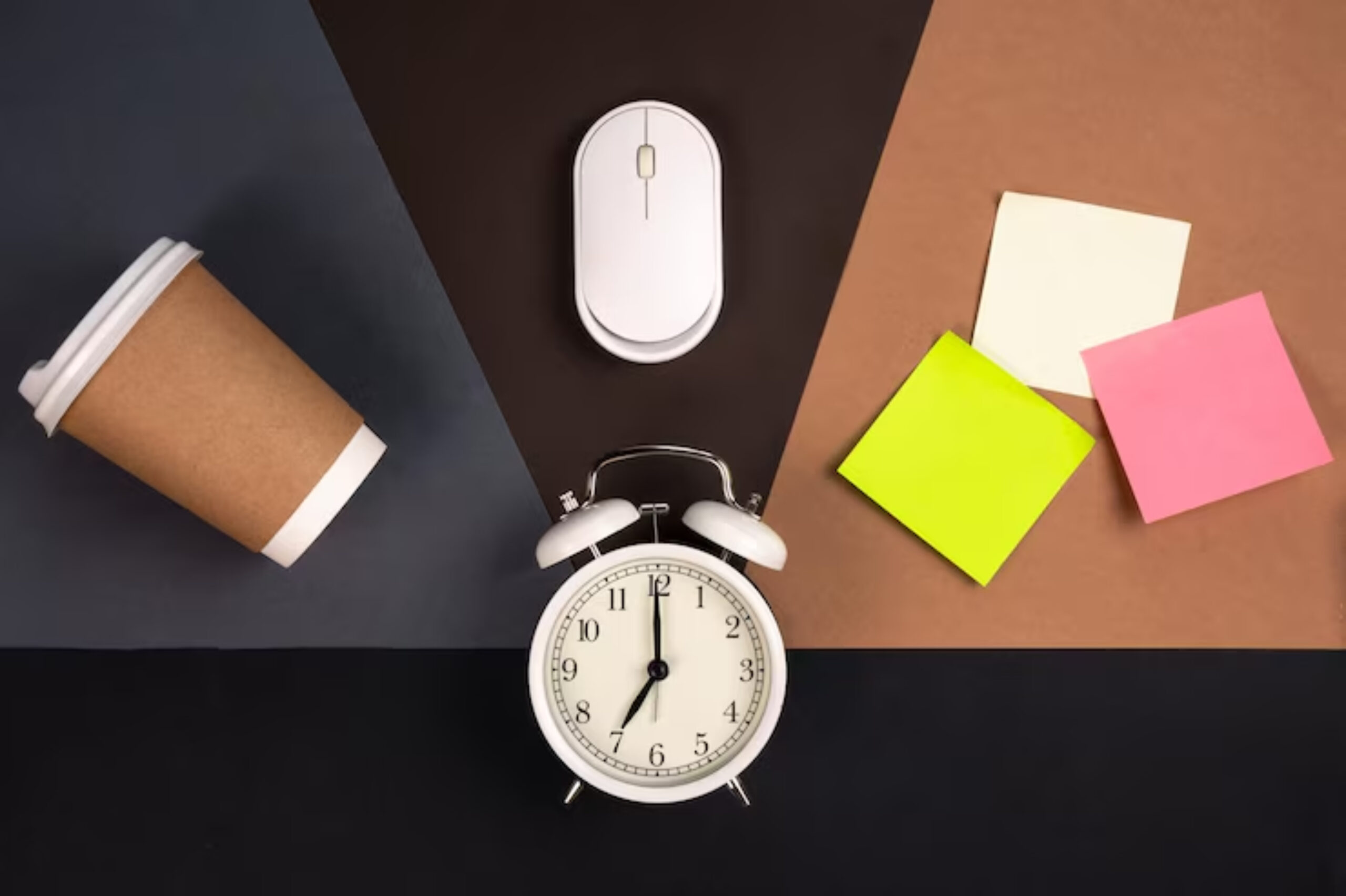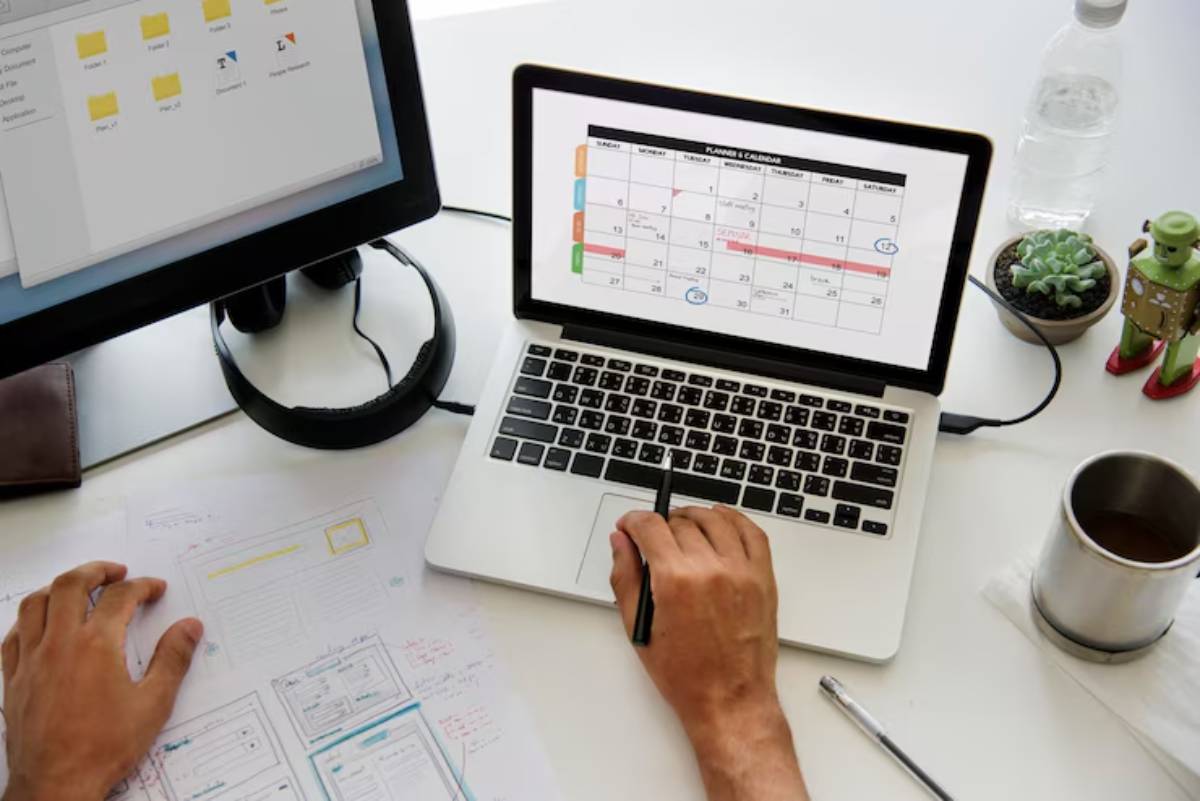
Time Blocking for Freelancers and Creatives
Freelancers and creatives enjoy more freedom than traditional workers. But this freedom brings a challenge: managing time without a 9-to-5 structure. You might start your day with good intentions, only to realise it’s 6 p.m. and you haven’t touched your most important project. Sound familiar?
That’s where time blocking becomes your best ally. A freelancer’s schedule system isn’t about restricting your creativity. It’s about protecting it. With intentional creative block planning and a flexible, independent work structure, you can honour your flow and meet deadlines.
In this guide, we’ll unpack a time blocking approach designed specifically for freelancers and creatives. You’ll learn to create a routine that honours your energy, sparks your creativity, and structures your workday while still allowing for spontaneity.

What Makes Freelancer Schedules Unique?
1. Fluid Start and End Times
You don’t clock in and out. That’s liberating—but also dangerous without structure. Freelancers often drift into reactive work, juggling too many priorities.
2. Creative Work Isn’t Linear
Some days, the ideas flow. On other days, nothing happens. Creative minds need space and protection to do their best work.
3. Multitasking Roles
You’re your own marketer, project manager, accountant, and CEO. That means time management isn’t optional—it’s survival.

Why Time Blocking Works for Creatives and Freelancers
Time blocking is a way to plan your day. You divide your day into blocks of time. Each block is for a specific task or activity.
Benefits:
- Encourages deep focus and flow
- Adds structure without rigidity
- Helps balance creative and admin work
- Reduces burnout by pacing your day
You stay in control. Your schedule becomes intentional, not accidental.
Building a Creative-Friendly Time Blocking System
1: Define Your Work Categories
Most freelancers have 3–5 main task types:
- Client Work (projects, deliverables)
- Admin (invoices, emails, scheduling)
- Marketing (content, social media, outreach)
- Learning (courses, industry reading)
- Personal (breaks, errands, downtime)
2: Batch Similar Tasks
Use task batching to group tasks by energy type:
- High-focus: Design, writing, editing
- Low-focus: Email, invoicing, file management
- Social-focus: Meetings, networking
Learn how batching supports deep work.
3: Map Your Energy Levels
Creativity flows differently throughout the day. Identify:
- Your high-energy windows (usually AM)
- Your low-focus periods (often post-lunch)
- Your recovery zones (late afternoons or evenings)
4: Build Your Ideal Day Template
Example template for a freelance copywriter:
- 8:00–9:00 AM: Planning + Journaling
- 9:00–11:30 AM: Client Work (High-Focus)
- 11:30 AM–12:00 PM: Buffer + Admin
- 12:00–1:00 PM: Lunch Break
- 1:00–2:30 PM: Marketing (Blog, Social)
- 2:30–3:00 PM: Buffer Block
- 3:00–4:30 PM: Creative Play / Learning

Time Blocking Tips for Freelancers
1. Use Soft Blocks
Don’t overbook yourself. Label blocks as suggestions rather than hard rules. Allow space for creative freedom.
2. Colour Code Your Calendar
Use consistent colours for:
- Client Work (Blue)
- Marketing (Green)
- Admin (Grey)
- Learning (Purple)
- Personal (Yellow)
3. Create Theme Days
Instead of switching gears constantly, assign each day a theme:
- Monday: Admin & Planning
- Tuesday/Wednesday: Client Work
- Thursday: Marketing + Meetings
- Friday: Learning + Reflection
4. Include Rest as a Block
Creativity needs recovery. Don’t treat rest as optional.
The Importance of Boundaries in Time Blocking
1. Say No to Mid-Block Interruptions
Let clients and collaborators know your availability.
2. Turn Off Notifications During Focus Blocks
Use Do Not Disturb. Apps like Freedom or Forest help.
3. Protect Weekends (Or Schedule Flex Days)
Even freelancers need time off. Block it.
Creative Tools That Help
Digital Planners
- Google Calendar: Custom colours, recurring events
- Notion: Build your own dashboard with task boards + time blocks
- Sunsama: Aligns daily tasks with calendar time
- Motion: AI schedules tasks around your meetings
Analogue Options
- Bullet Journals
- Printable time block planners
- Whiteboard visual blocks
Real-World Example: Zoe the Designer
Zoe used to start her day with email and social media, then scramble to meet deadlines in the afternoon. Her creative energy was wasted early on in the administrative work.
She switched to a creative-first time block:
- 9:00–11:30 AM: Design work
- 11:30 AM–12:30 PM: Client communication
- 2:00–3:30 PM: Marketing and portfolio updates
Result?
- Better focus
- Fewer all-nighters
- Stronger client outcomes
Managing the Unexpected
Even the best-laid plans need flexibility. Here’s how to stay adaptable:
Use Emergency Buffer Blocks
Have at least one “open” hour daily for rescheduling or urgent tasks.
Weekly Review & Adjust
Every Friday, reflect:
- What threw off your blocks?
- What flowed?
- What needs to shift next week?
Common Pitfalls and How to Avoid Them
1. Overloading Your Day
Avoid scheduling back-to-back blocks all day long. Leave space.
2. Forgetting Creative Recovery
Creativity is fuelled by downtime. Protect your weekends.
3. Ignoring Energy Patterns
Pay attention to when you feel most alert. Match your toughest tasks accordingly.
Conclusion: Create a Routine That Works With, Not Against, Your Creativity
Time blocking isn’t about stuffing your day with tasks. For freelancers and creatives, it’s about building a rhythm that supports your ideas and independence. By aligning your work with your natural flow, you reclaim your calendar as a creative ally.
With the right freelancer schedule system, strategic creative block planning, and an adaptable independent work structure, you can deliver great work without burning out.
Start with just one block tomorrow. Label it “Creative Work.” Protect it. Let your ideas flourish in the time and space they deserve.
Want to level up? Explore buffer blocks for schedule flexibility.


